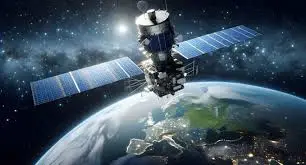Starlink receives govt clearance to offer satellite internet services in India

In a major breakthrough for global connectivity, Elon Musk’s Starlink has received a green light from the Indian government to begin offering satellite internet services in the country. This long-anticipated move signals the dawn of a new era for India’s digital infrastructure—especially for rural and remote regions that continue to struggle with access to high-speed internet.
A Major Step Forward for Starlink in India
The Department of Telecommunications (DoT) recently issued a Letter of Intent (LoI) to Starlink, enabling the company to move forward with acquiring the necessary licenses to operate. These include the Global Mobile Personal Communication by Satellite (GMPCS) license, as well as approvals to offer Very Small Aperture Terminal (VSAT) and Internet Service Provider (ISP) services.
This development follows Starlink’s recent efforts to comply with India’s security protocols and localization mandates, which had previously delayed its entry into the market. The LoI represents the government’s formal acceptance of Starlink’s application and paves the way for full-scale operations once final clearances are granted.
What Makes Starlink Unique?
Starlink, a subsidiary of Musk’s aerospace company SpaceX, delivers internet using a constellation of low-Earth orbit (LEO) satellites. Unlike traditional telecom infrastructure, which relies on ground-based towers and cables, Starlink beams internet directly from space to user terminals, enabling high-speed access even in geographically isolated locations.
With over 5,000 satellites already in orbit, Starlink’s global network is designed to provide low-latency internet with speeds that rival fiber-optic connections. For a country like India, where millions still lack reliable internet, especially in rural areas, Starlink could be a game-changer.
Security and Compliance: Key Hurdles Crossed
Before granting approval, the Indian government required Starlink to adhere to a strict set of data and security protocols. These include:
- Hosting user data within India
- Allowing lawful interception by Indian authorities
- Ensuring that 20% of its satellite ground infrastructure is built using indigenous components
- Implementing location tracking for user terminals when moved over large distances
Sources suggest that Starlink has agreed to these terms, including setting up local data centers to comply with India’s data sovereignty laws. This demonstrates the company’s commitment to aligning with national priorities while expanding its footprint.
Strategic Partnerships on the Horizon
Interestingly, Starlink is not entering the Indian market alone. Reports indicate the company is forming strategic partnerships with local telecom giants like Reliance Jio and Bharti Airtel. While these firms are major competitors in the mobile and broadband sectors, collaborating with Starlink may offer them a way to expand coverage in underserved regions where traditional infrastructure is difficult to deploy.
Such alliances could enable Starlink to scale faster, tap into existing customer networks, and comply with India’s regulatory environment more efficiently. This would also help integrate satellite internet with existing mobile and fiber networks, creating a hybrid model for nationwide connectivity.
A New Digital Frontier for India
Starlink’s arrival comes at a critical time. Despite rapid strides in digital development, nearly 40% of India’s population remains without stable internet access, particularly in villages and hilly terrains where broadband cables and cell towers are not economically viable.
With Starlink’s satellite-based system, these remote communities can potentially access high-speed internet for the first time—opening doors to digital education, telemedicine, online banking, and remote work opportunities.
The government’s “Digital India” mission stands to benefit significantly from this partnership. If implemented effectively, satellite internet could narrow the urban-rural digital divide and bring millions of Indians into the digital mainstream.
Challenges Ahead
However, Starlink’s journey in India will not be without challenges. Pricing remains a major concern. Starlink’s services are currently priced at a premium in other countries—around $100 per month—which may be unaffordable for average Indian households unless subsidized or adjusted for local conditions.
Additionally, competition in India’s telecom space is fierce. With players like Jio and Airtel rolling out affordable 5G and fiber services, Starlink will need to carve out a clear value proposition. Its strongest niche may lie in regions where traditional ISPs cannot reach.
Regulatory scrutiny will also remain tight, especially given the sensitive nature of satellite communication and national security considerations.
What’s Next?
The issuance of the Letter of Intent is just the beginning. Starlink now needs to complete final documentation, set up the required infrastructure, and run pilot projects to demonstrate performance and compliance. If all goes well, commercial rollout could begin in late 2025 or early 2026.
This development places India among a select group of countries where next-generation satellite internet is not just an experiment, but a near-future reality. It underscores India’s growing relevance in global tech policy and its commitment to enabling cutting-edge technologies for its citizens.
Conclusion
Starlink’s clearance by the Indian government marks a significant step in the country’s digital evolution. By harnessing satellite technology, India has the opportunity to overcome long-standing connectivity barriers and deliver internet access to its most underserved regions. While regulatory and pricing challenges remain, the promise of universal internet coverage is closer than ever—one satellite at a time.






